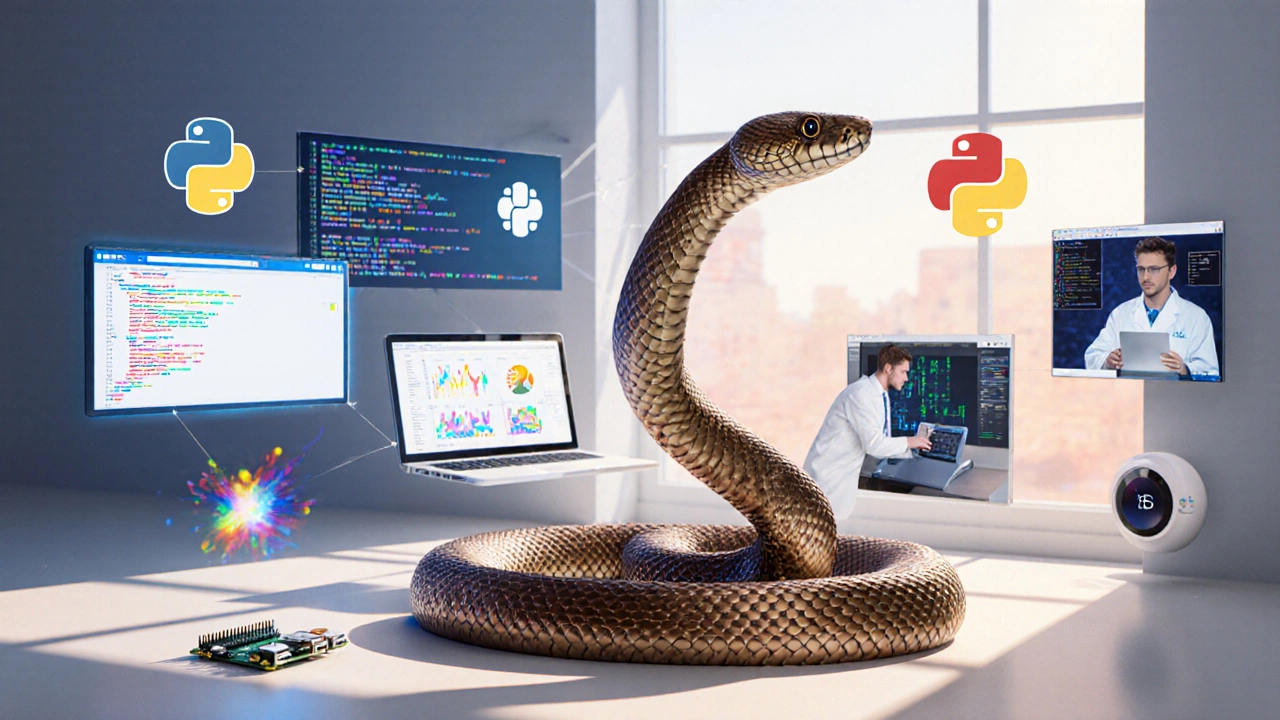Python use cases: real‑world examples and how to apply them
When working with Python, a high‑level, versatile programming language known for its readable syntax. Also known as Py, it powers everything from websites to scientific research. Data Science, the practice of extracting insights from data using statistical and machine‑learning techniques relies heavily on Python’s extensive libraries like pandas and scikit‑learn. Web Development, building dynamic websites and web applications often starts with frameworks such as Django or Flask written in Python. Automation, the process of using scripts to perform repetitive tasks without manual effort is another classic arena where Python shines, from file handling to testing pipelines. Finally, eLearning platforms, online systems that deliver educational content and track learner progress integrate Python for backend services, content recommendation engines, and data analytics.
Python Python use cases span far beyond the four fields just mentioned. In finance, analysts use Python to model risk, automate report generation, and back‑test trading strategies with libraries such as NumPy and QuantLib. Healthcare professionals tap into Python for medical imaging, patient data analysis, and predictive diagnostics, turning raw data into actionable insights. Marketing teams lean on Python scripts to scrape competitor data, segment audiences, and personalize email campaigns, all while keeping costs low. Even hobbyist makers employ Python on Raspberry Pi boards to control sensors, run home‑automation hubs, and prototype IoT devices. The common thread? Python’s simple syntax lowers the barrier to entry, while its massive ecosystem provides ready‑made tools for almost any task.
Why Python fits your next project
If you’re choosing a language for a new project, consider three practical questions. First, does the problem involve data manipulation or statistical analysis? If yes, Python’s data‑science stack gives you fast, reliable results. Second, are you building an interactive user experience on the web or a mobile backend? Python’s web frameworks let you spin up secure APIs in days, not months. Third, will the solution need to run automatically or integrate with other services? Python’s scripting power and wealth of automation libraries mean you can schedule jobs, process files, or connect to cloud APIs with just a few lines of code. By matching the project’s core needs to one of the entities described above—data science, web development, automation, or eLearning—you get a clear roadmap for which libraries, frameworks, and best practices to adopt. Below you’ll find a curated list of articles that dive deeper into each of these areas, offering step‑by‑step guides, tool comparisons, and real‑world examples to help you start building today.
What Is Python Used For? Exploring Real‑World Applications
Discover the many ways Python is used today-from web apps and data science to automation, AI, IoT, and education-plus tools, examples, and getting‑started tips.
read more